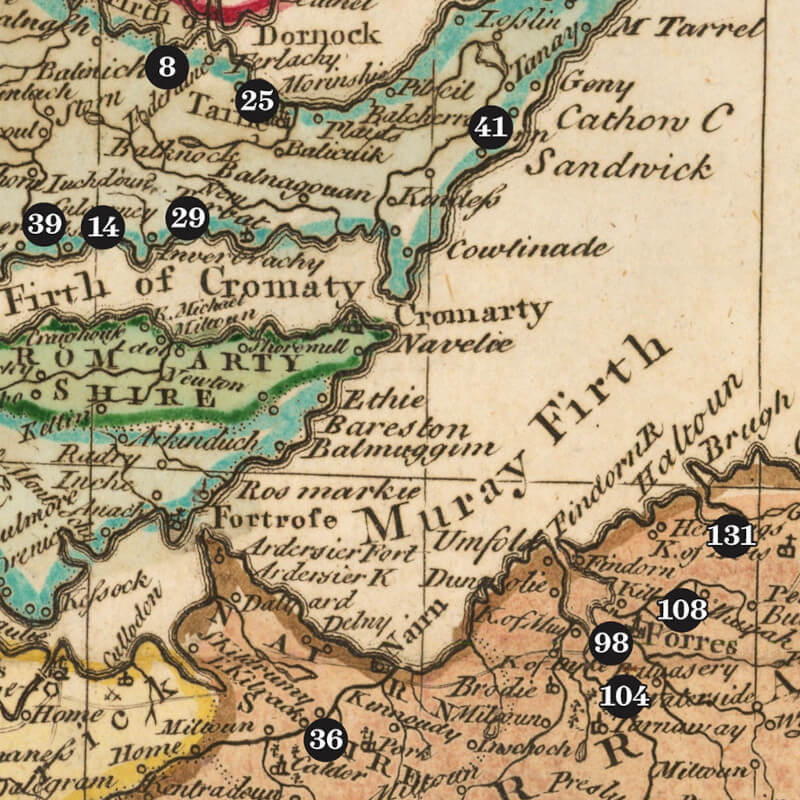The Roots of Scotch Geography
The 18th century saw Scotch whisky’s first geographical delineation with the establishment of the Highland line, defining everything to its north as distinct from the southern regions. This division set Highland’s small pot stills and Lowland’s larger distilleries on divergent trajectories. Later, with the emergence of blended Scotch, additional distinctions surfaced, giving birth to names like Campbeltown, Islay, and, later, Speyside. To many, these regions were mere figments of imagination, conjured up by blenders rather than consumers.
Diageo (formerly UDV) amplified this regional perspective in 1988 with its launch of six Classic Malts, offering a spectrum ranging from Glenkinchie’s fresh profile to Lagavulin’s deep smokiness. This approach undeniably introduced many, including seasoned drinkers, to the varied flavors of single malts. But has the regional approach outlived its relevance?
Historical Significance: When you delve into the world of whiskey, regions can offer a glimpse into the spirit’s storied past. Historical distillation practices evolved differently across regions, affecting the spirit’s character.c
Dissolving the Regional Boundaries
Steven Kersley, from LoneWolf Distillery, raises eyebrows at the very idea of a regional flavor profile. He argues that equating flavor to a distillery’s location is an antiquated notion. Pointing to distilleries like Bunnahabhain and Bruichladdich, which produce unpeated whiskies, yet still fall under the ‘Islay’ tag, he highlights the inaccuracies of these geographical labels.
Modern Techniques Override Region: With advanced distillation methods and maturation techniques, modern distilleries can now mimic flavors from any region. This means the whiskey you’re savoring could be a product of technology
The Globalization of Flavors: In today’s interconnected world, your favorite distillery can easily access ingredients from any region, blurring the strict lines that once defined regional tastes.
Innovation Over Tradition: Modern distilleries often prioritize crafting unique flavors over adhering to regional traditions. For them, the label is just that – a label. Your focus should be on the craftsmanship and ingredients, not the region.
Drawing from his own experience at LoneWolf, Steven relays their focus on showcasing ingredients rather than tying their products to a “Highland style.” What resonates with him is the distillery’s liberty to be experimental. The global trend of importing peated malt and crafting unique whiskies, even outside of Scotland, underscores his perspective. For Steven, it’s about the spirit’s character and craftsmanship, not its postcode.
In Defense of Whisky Regions

On the flip side, Jamie Dawson from Royal Mile Whiskies emphasizes the continued importance of whisky regions. To him, these regions are more than mere geographical demarcations; they’re the first stepping stones into the vast world of single malts. In an age where countries around the globe are producing their single malts, Jamie believes that Scotland’s regional approach offers a historical depth and a competitive edge.
Preservation of Tradition: Maintaining regional identities ensures that traditional whiskey-making techniques and flavors are preserved. This way, you can still experience time-honored flavors that have been cherished for centuries.
Educational Purpose: For a newbie, regions serve as an educational tool. They provide an entry point, allowing you to understand the broad differences before diving deeper into individual distillery styles.
He acknowledges the regional limitations but sees them as a starting point, not an end. Jamie champions the idea of updating the current regional map, potentially with sub-regions tied to stylistic differences. Without some form of geographical guidance, he fears potential chaos and a loss of the unique regional diversity in Scotch single malts.
Geographical Distinctions: Natural factors like climate and topography can influence the whiskey’s maturation process. So, when you’re sipping a coastal whiskey, the maritime influence could be evident in its profile.
In terms of terroir, while some elements like grain might not always be local, there were times when distilleries, like Talisker, mirrored their surroundings in their spirit. Even with evolving methods and modern changes, he insists that this historical resonance still plays a role.
Terroir and Taste: When you taste a whiskey, regional nuances can sometimes be detected, influenced by the local water, air, and even the soil. This offers a unique flavor profile that’s hard to replicate elsewhere.
Whisky, Wood, and Where It’s Made
One can’t delve into this debate without touching on the influence of casks. While Steven wishes to liberate the spirit from geographical confines, Jamie cautions against an over-reliance on the wood narrative. After all, endless chatter about first-fill, refill, or dechar/recharge barrels might not be the most inviting introduction for a newbie to malt whisky.
Market Dynamics: Sometimes, regional labels are more about marketing than genuine regional characteristics. If a certain region gains popularity, you might find distilleries highlighting that aspect more, even if their spirit doesn’t strictly adhere to traditional profiles.
Taking a leaf from Steven’s observations, proximity doesn’t always mean similarity. Case in point: Dalmore and Teaninich. These neighboring distilleries produce spirits that, when tasted blind, would never be guessed as products of adjacent facilities. This serves as a poignant reminder that, in the world of whisky, things aren’t always as they seem.
The Evolution of Taste: Tastes evolve. Just as cuisines around the world have seen fusion and evolution, so too has whiskey. The spirit you relish today might be a blend of multiple regional influences, making the label’s region less relevant.
The tug-of-war between tradition and innovation, between geographical identity and unbridled creativity, is a tale as old as time. As you sip on your next glass of whisky, remember: whether you view regions as helpful guideposts or mere labels, the essence of the spirit lies in its flavor, craftsmanship, and the stories it holds. In the end, isn’t that what truly matters?
